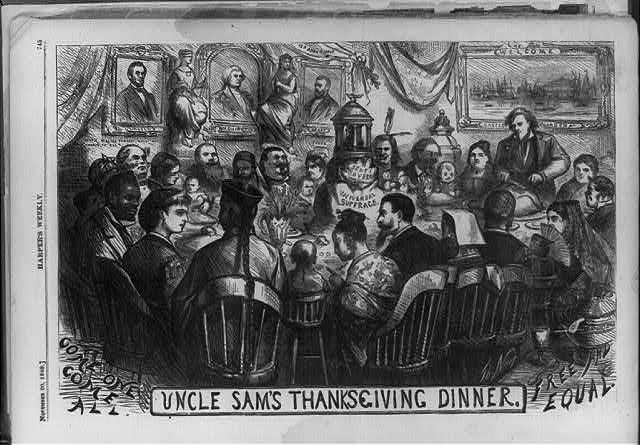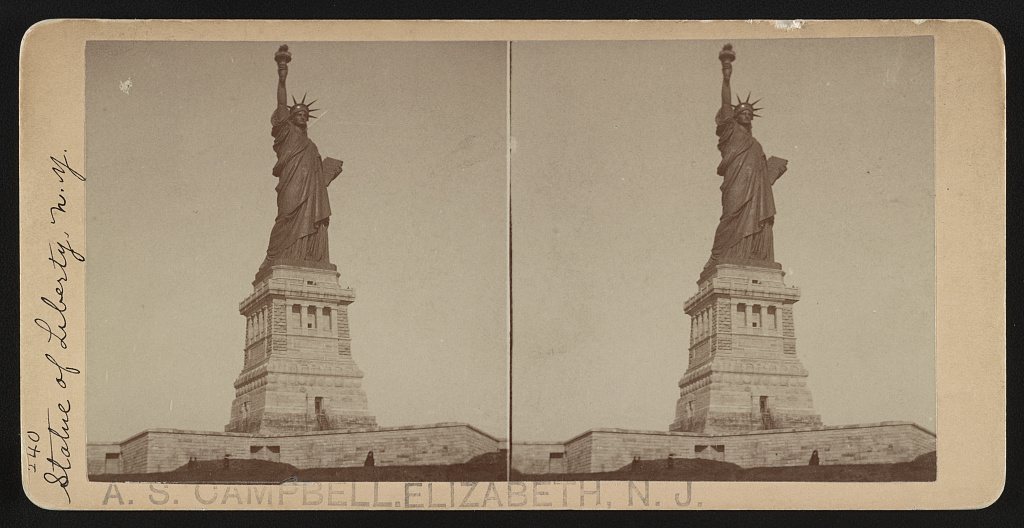“Give me your tired, your poor,
Your huddled masses yearning to breathe free,
The wretched refuse of your teeming shore.
Send these, the homeless, tempest-tost to me,
I lift my lamp beside the golden door!”
Ever since the words of Emma Lazarus’s poem, “The New Colossus,” were embedded on the pedestal of the Statue of Liberty in 1903, the Statue itself has become a beacon of hope and opportunity. The descendent of Portuguese Sephardic Jews, Lazarus was a prolific poet and activist who worked to help Russian Jews flee persecution to the U.S. Today, her words are almost as famous as the Statue itself.
Last August, Ken Cuccinelli, head of Citizenship and Immigration Services defended the Trump Administration’s “public charge rule.” In an interview with Rachel Martin on NPR’s Morning Edition, Martin asked him whether the words “Give me your tired, give me your poor,” are still part of the American ethos.
“They certainly are,” Mr. Cuccinelli responded. He then offered a revised version of the poem. “Give me your tired and your poor – who can stand on their own two feet and who will not become a public charge.”
The public charge rule dates back to the late 1800s, around the same time the Chinese Exclusion Act was implemented and the beginning of the United States’ experimentation with eugenics as a means to control “undesirable” populations like immigrants, people of color, poor people, unmarried mothers, and the disabled. Since then, it has been used to deny green cards to immigrants deemed a “public charge,” or those who will be too burdensome on the government. For the last decade, this rule was applied fairly narrowly and only affected immigrants who were dependent on two federal public benefits for income: SSI (supplemental security income) and long-term care.

The Administration’s public charge rule, however, is far broader and would deny legal immigrants access to some of the most important benefits offered in America—including Medicaid, food stamps, and housing assistance. The proposed rule has already led many to cancel benefits not only for themselves, but also for their children, out of fear continuing to use them could jeopardize their immigration status. In many cases, their children are U.S. citizens.
Mr. Cuccinelli expanded upon his comments, by claiming “that poem was referring back to people coming from Europe – where they had class-based societies where people were considering wretched if they weren’t in the right class.”
Mr. Cuccinelli’s comments reflect a misunderstanding of the history behind U.S. immigration policy and a misappropriation of the American narrative. In some ways the Trump Administration’s new immigration policy is a continuation of long-standing doctrines, but it might fit more with policy from the 1920s Jim Crow era than today.
The harsh reality is that U.S. immigration law has often been focused on excluding those who “weren’t in the right class.”
The largest period of migration to the U.S. occurred between the 1880s and 1920s, when 25 million immigrants arrived at our border. Prior to the 1920s, immigration into the U.S. wasn’t restricted numerically. As historian Mae Ngai states in her work, Impossible Subjects, freedom of movement and labor was viewed as a right in Europe starting in the seventeenth century and this laissez-faire immigration framework crossed the Atlantic.
These new immigrants predominantly came from Asia as well as Southern and Eastern Europe. While previous generations of immigrants from Northern and Western Europe had met hostility upon arriving in the U.S., the ire of Americans shifted to the new arrivals. Still, there wasn’t a federal restriction placed on any of these peoples.
The brutal exception to this was the Chinese Exclusion Act of 1882. Signed into law just a year before Lazarus wrote “The New Colossus,” the law banned Chinese migrants from entering the U.S. and declared them racially ineligible for naturalization or citizenship.

The Chinese Exclusion Act accompanied the Immigration Act of 1882, which contained the first “public charge” doctrine. The section allowed the U.S. to deny entry “any convict, lunatic, idiot or any person unable to take care of himself or herself without becoming a public charge.”
Despite this doctrine, only 1 percent of the 25 million immigrants from Europe were excluded. These immigrants were largely unskilled workers who took jobs very few others were willing to do. These men, women, and children constituted a working class like that of Europe.
In order to further curb the immigration of peoples many white Americans of the time deemed as unsuitable for entry, Congress passed the Immigration Act of 1917 (following the vetoes of Presidents Cleveland and Taft and overriding the veto of Wilson) which implemented a literacy test for admission.
When literacy tests and immigrant fees failed to stifle immigration to its liking, Congress passed the Johnson-Reed Act of 1924. This was the nation’s first comprehensive restriction law that set numerical limits on immigration. These limits were based entirely on racial and national hierarchy and favored some immigrants over others.
The Johnson-Reed Act coincided with the height of Jim Crow segregation. By the 1920’s, nativism and racism propped each other up as immigration policies helped harden racial categories. Literacy tests and poll taxes were already in use across the country to disenfranchise African Americans. Congress easily translated these into immigration policy alongside quotas to further exclude those who “weren’t in the right class.” Then, like now, “class” could also mean race or country of origin.
It wouldn’t be until the 1965 Hart-Cellars Act that the national origins quota system was abolished. Enacted during the Civil Rights Movement, the 1965 act seemed a way for Americans to construct a more liberal immigration policy befitting of our democratic narrative.
By equating the Administration’s new public charge doctrine with the policies of the past, Mr. Cuccinelli drew dangerous comparisons. His statements ignore the fact that nothing in the Trump Administration’s proposed policy targets existed in the 1880’s. Medicaid, SNAP benefits, and similar housing benefits wouldn’t exist for another 80 years.
Perhaps most concerning of all is the fact that Mr. Cuccinelli made his statements so lightly. “That plaque was put on the Statue of Liberty at almost the same time as the first public charge [law] was passed – very interesting timing,” he said seemingly casually.
His words largely ignore the broader history of American immigration policy, nativism, and racism.
Law both reflects and constructs social norms. Just like how global push and pull factors affect immigration trends, immigration policy shapes how we react to immigrants and refugees. The words of “The New Colossus” aren’t important because they perfectly reflect the story of America. The words of “The New Colossus” are important because they reflect how America could be more perfect. It is up to us to decide what that America will look like.
NOTE: Featured image citation: Campbell, Alfred S. Statue of Liberty,N.Y. New Jersey New York New York Harbor, 1896. [Elizabeth, N.J.: Alfred S. Campbell, Publisher] Photograph. https://www.loc.gov/item/2017658485/.

Leave a Reply